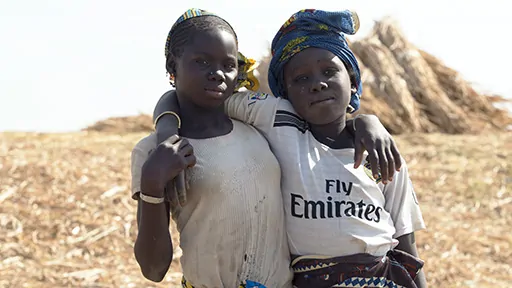Opinion Editorial Archive June, 2019: The Special Someone

If, under laboratory conditions, a sperm from Orycteropus afer were to enter an egg from Rattus norvegicus, the outcome would not be fertilization. Put another way, if an aardvark were to attempt to mate with a rat, it would fail; no rat or aardvark is the special someone that can interbreed with a different species.
We don't need to look far to see how divided our world is becoming. Religion, politics and ideology feature daily in situations of disagreement and conflict. Last month, Taiwan became the first Asian country to legalize same-sex marriage while Kenya dismissed a challenge to its laws banning homosexual acts between men. Meanwhile, Brazil's Supreme Court criminalized homophobia. These three events happened across three continents in the space of only a few hours. A few days later we learned that the 'crime' of comedic, theatrical performance is more severe in Burma (Myanmar) than the crime of genocide. No Rohingyas are the special someones that cannot be massacred.
We also saw last month how divided the United States is on the issue of abortion. While not the only state there to pass strict new abortion laws, Alabama received most of the mainstream media coverage. As expected, both the American Civil Liberties Union and Planned Parenthood have sued the State of Alabama to prevent the law from taking effect. Only a few hours ago Planned Parenthood was able to keep open Missouri's only legal abortion clinic. But that status could change in a few days. No female is the special someone that has the right to make decisions about her own pregnancy.
When I watched the first episode of the 22nd season of the animated children's program Arthur last month, I learned nothing. I suspect that any child who watched it also learned nothing. Children have been watching human cartoon characters talk to animal cartoon characters since the days of Walt Disney, William Hanna and Joseph Barbera. When the children (in the episode) learn that a female adult character is another's sister, they immediately realize that their prior assumption that she is his fiancée was false. Children have been socialized to recognize incest taboo in all cultures for thousands of years. When those same children learn that his actual fiancé is another male, they show no reaction that indicates that same-sex marriage is unusual (it is legal in the US). Nor do they react strangely at a rat marrying an aardvark. Children laugh routinely at jokes of the form: 'What would you get if you crossed an elephant and a fish? Swimming trunks' because they already know that elephants and fish cannot interbreed. And they generally embrace Beauty and the Beast without question.
This month's photo shows two young, indigenous Bozo girls from Mali, West Africa. Of course, they are expressing nothing other than their non-sexual friendship for their 'special someone' in the same way that girls do the world over. But what if the photo had been of two adolescent boys instead? Would you assume that they were gay? Boys (and young men) displaying non-sexual affection toward each other in this way is very common in many parts of the world, including much of West Africa. Homosexuality is legal in Mali, but punishable by death or imprisonment in most of its neighboring countries. No male is the special someone that is allowed to be gay.
Alabama Public Television refused to broadcast S22E01 of Arthur entitled "Mr. Ratburn and the Special Someone" last month. Not because it thought that children who watched it might grow up to practice incest or to attempt interbreeding with other species, but, presumably, because they might grow up to be homosexual and then require gay conversion therapy to cure them. Scientific research suggests otherwise: exposure to the program is equally likely to result in any of these three behaviors and that likelihood is zero. Anyone interested in the science could start with the works of Garrard Conley and Marc Breedlove (among others).
With advances in molecular biology, it might be possible one day, under laboratory conditions, to produce viable offspring from rats and aardvarks. If it ever is, we already know how to manipulate the offspring's sexual orientation. We would also then know the answer to the question: 'What would you get if you crossed an aardvark and a rat?' I already know the answer: 'Something too special to work for Alabama Public Television or the Alabama State Legislature.'
If you enjoyed reading this month's opinion editorial, please consider supporting independent, advertising-free journalism by buying us a coffee to help us cover the cost of hosting our web site. Please click on the link or scan the QR code. Thanks!

